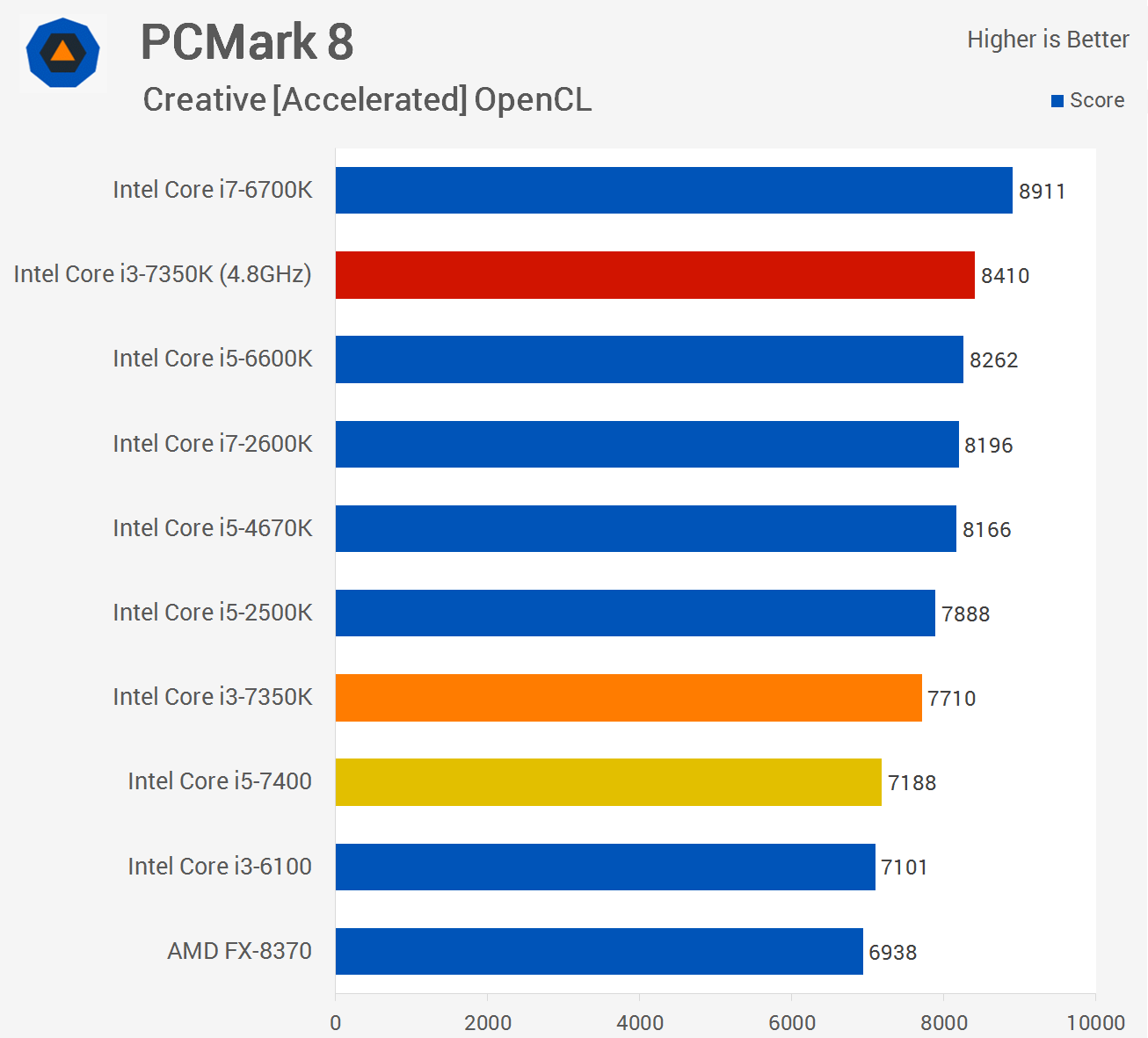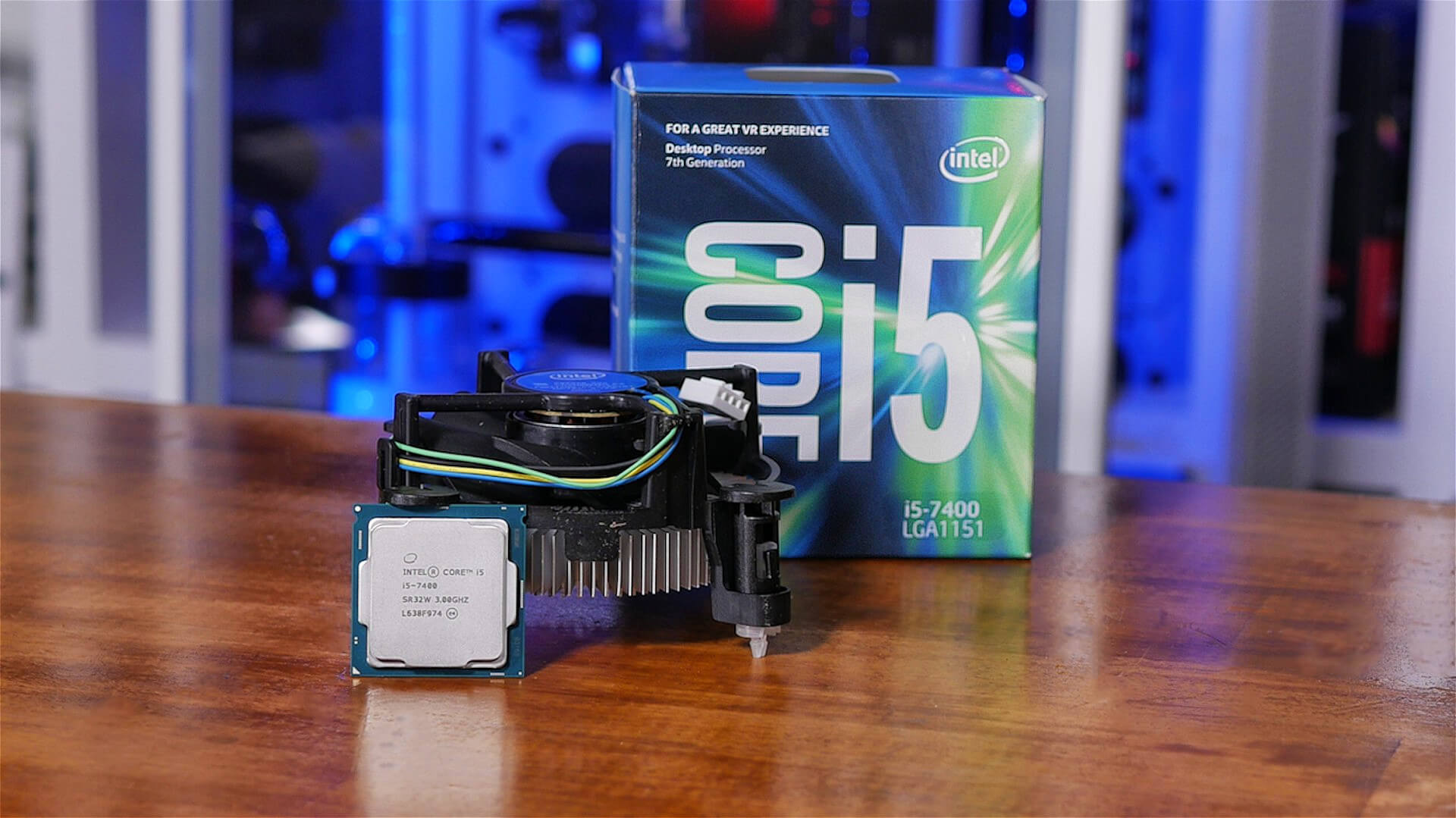Although the launch of Intel's seventh-generation processor series in January was a relatively uneventful affair, there were a few items of interest – namely the unlocked Core i3 7350K, which captured most of Kaby Lake's headlines early on.
Despite that early intrigue, with a current retail price of $180, the 7350K is a mighty expensive dual-core processor and for $20 more you can land the quad-core Core i5-7400 (confusingly, both cost the same amount in Australia and other regions). Given their similar prices, quite a few of you have asked which is the better buy between the Core i3-7350K and Core i5-7400.
The advantage of the slightly pricier Core i5-7400 is that it has four cores and larger L3 cache while its disadvantage is that it's locked at a base clock frequency of 3GHz with a maximum single core operating frequency of 3.5GHz. There is a bit more to this comparison but that's the gist of it.
The Core i3-7350K on the other hand comes clocked at least 20% higher, 40% higher in fact when compared to the i5's base clock frequency. This is also an unlocked-K processor which means it can be overclocked to achieve even greater frequencies. I got my chip up to 4.8GHz without much fuss and that's almost 40% above the i5's maximum turbo boost frequency.
A clock speed advantage of roughly 40 to 60% is huge and with its support for Hyper-Threading the 7350K should really challenge the 7400. There are however a few other factors at play here which make the 7350K look a whole lot less enticing, so let's touch on that before we even get to the benchmarks.
Consumers can pretty much get the most out of the Core i5-7400 on a $50 H110 motherboard with the standard Intel box cooler, while the 7350K requires a Z-series motherboard. Z170 boards start at $90 and Z270-based models start at $110, which is quite a bit more than an H110 motherboard. Not only, that but the 7350K will require an aftermarket cooler so you can add another $30 to the price.
Therefore, you're looking at $250 for the Core i5-7400 with an entry-level motherboard whereas the 7350K will set you back at least $300 with a basic Z170 board and budget tower style air-cooler. So in the end you are paying about 20% more for the 7350K and its required components. Keeping all that in mind, let's find out how the two compare...
Test System Specs
|
Kaby Lake System Specs
|
Vishera System Specs
|
|
Skylake System Specs
|
Sandy Bridge System Specs
|
Benchmarks: Applications
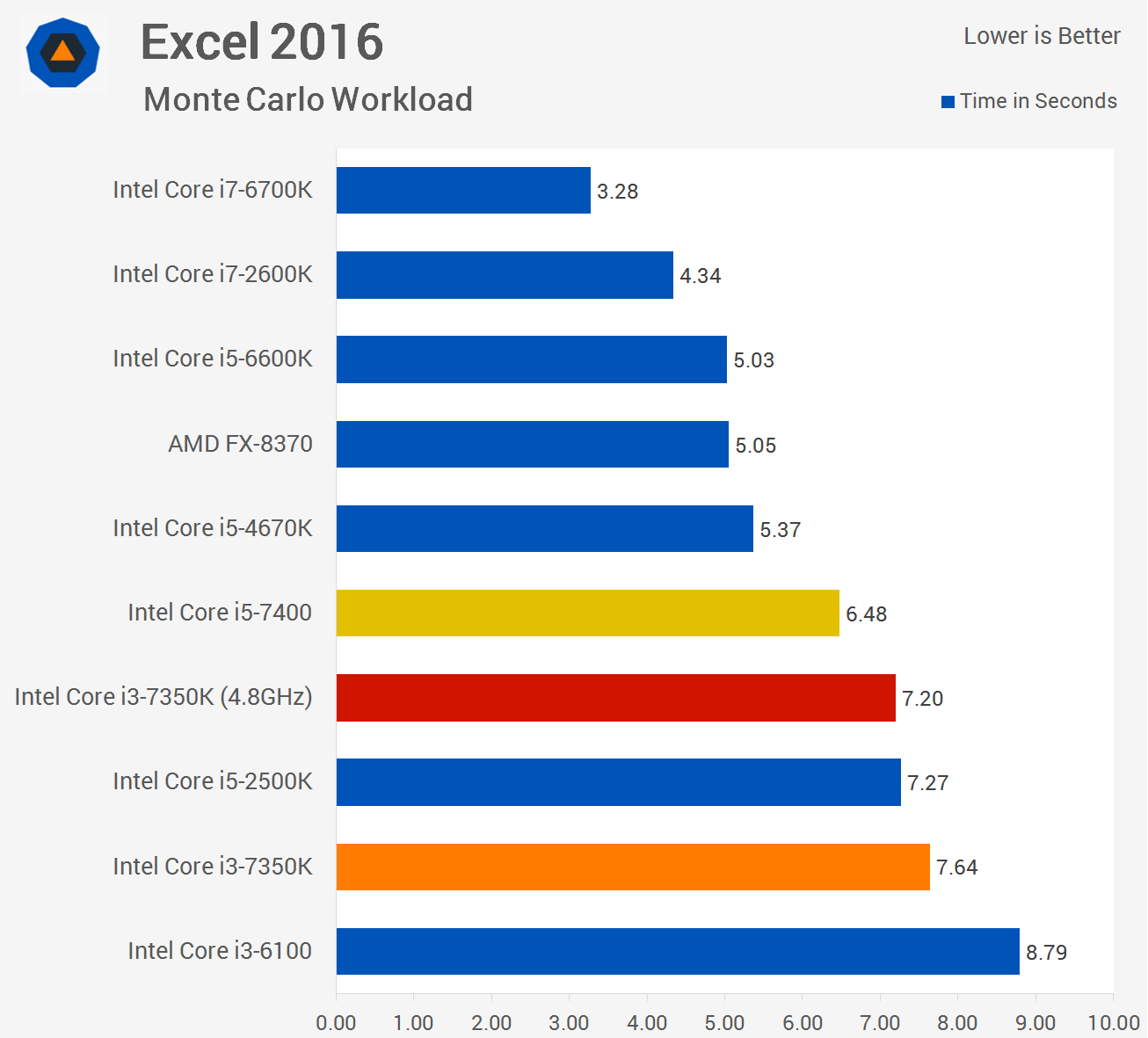
Excel is an application that has no problem utilizing a large number of threads and as such the Core i5-7400 performs much better than the 7350K. Even overclocked the 7350K simply couldn't match the 7400, taking over 10% longer to complete the workload.
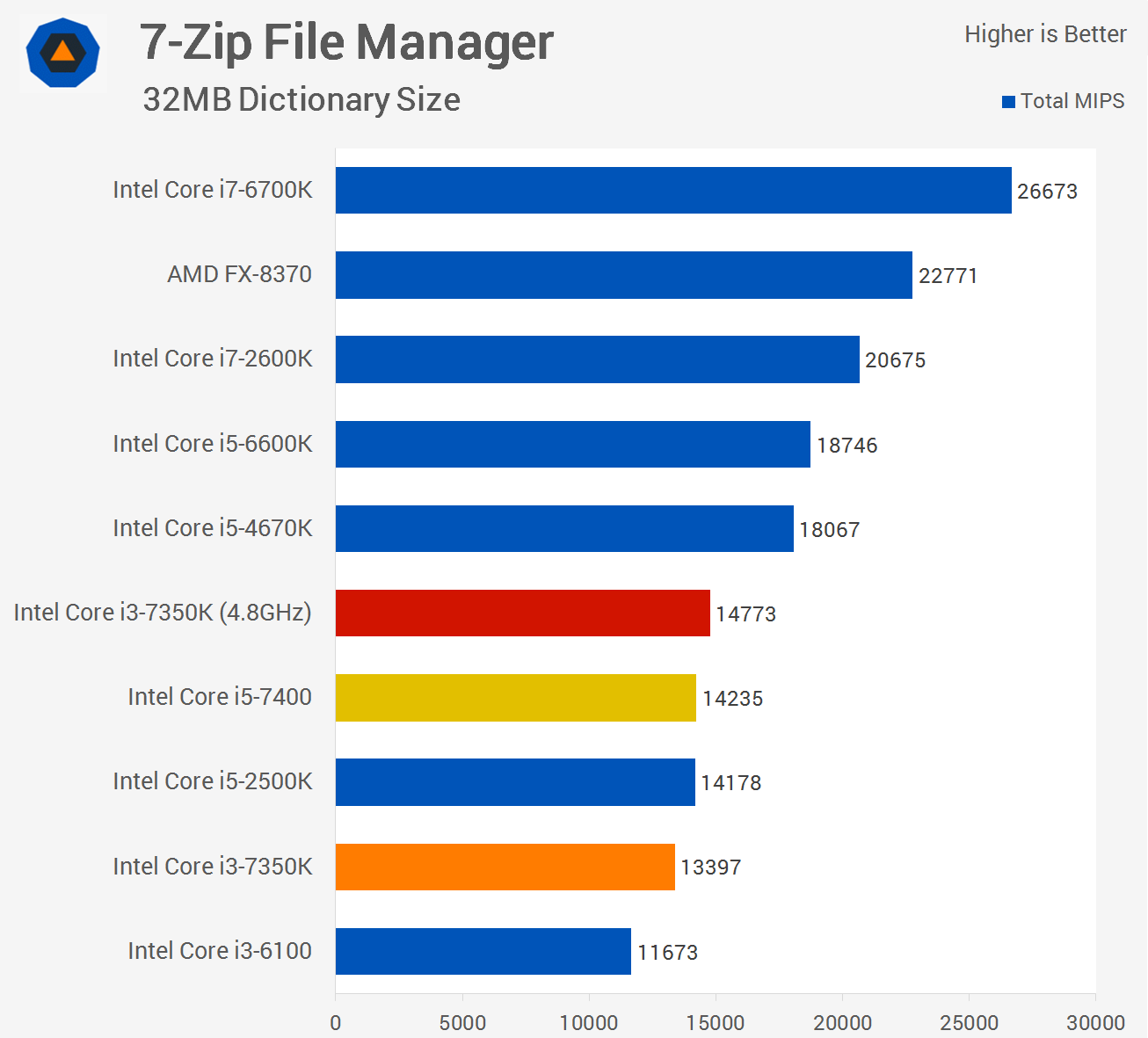
Surprisingly the overclocked 7350K was able to nudge ahead of the 7400 in the 7-Zip benchmark, that said it was just 4% faster.
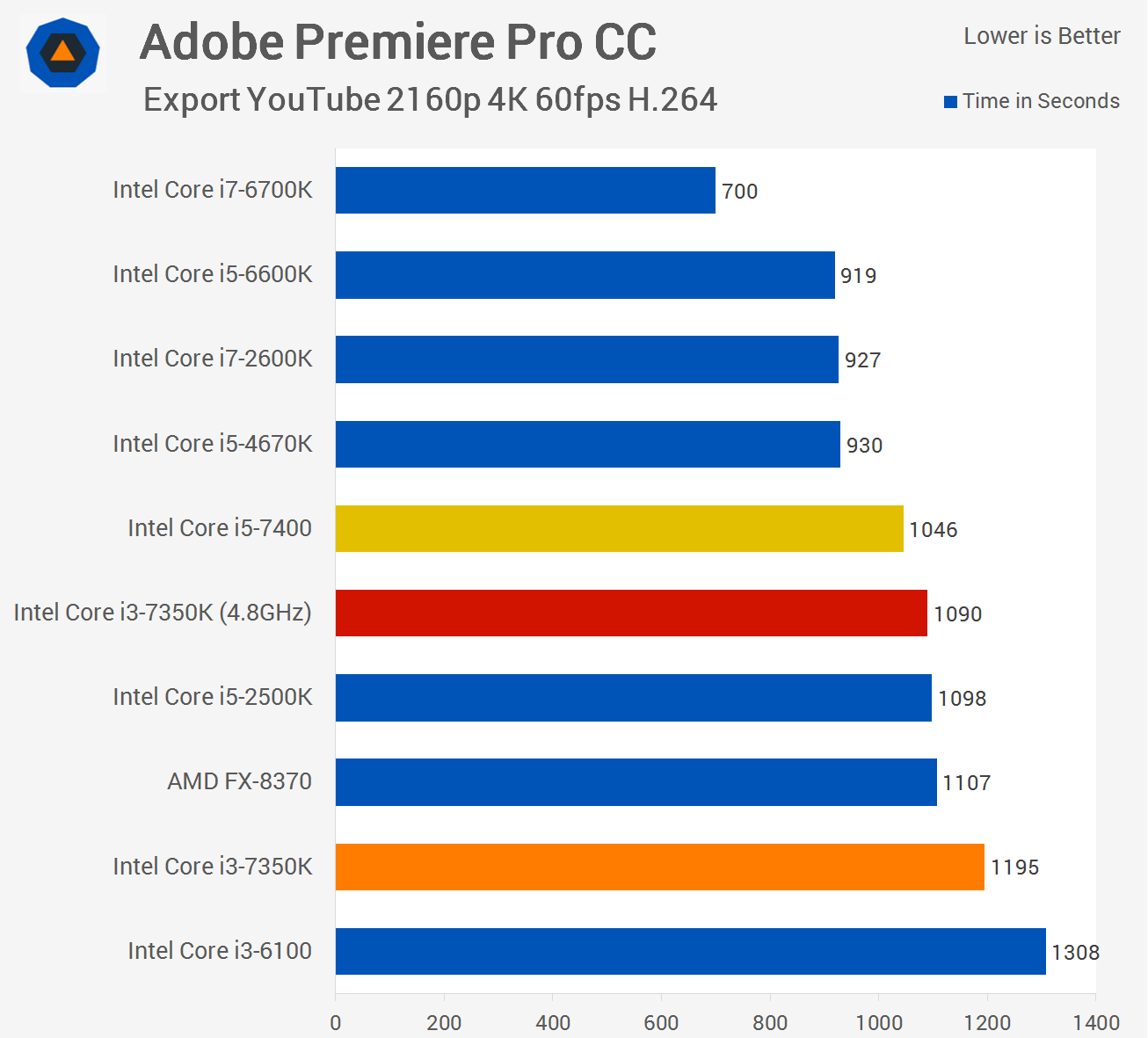
For any kind of encoding work having four physical cores will always beat trump two cores with Hyper-Threading and we see that here when testing with Premiere Pro CC. Even at 4.8 GHz the 7350K was 4% slower than the 7100 taking 18 minutes and 16 seconds to complete the workload.
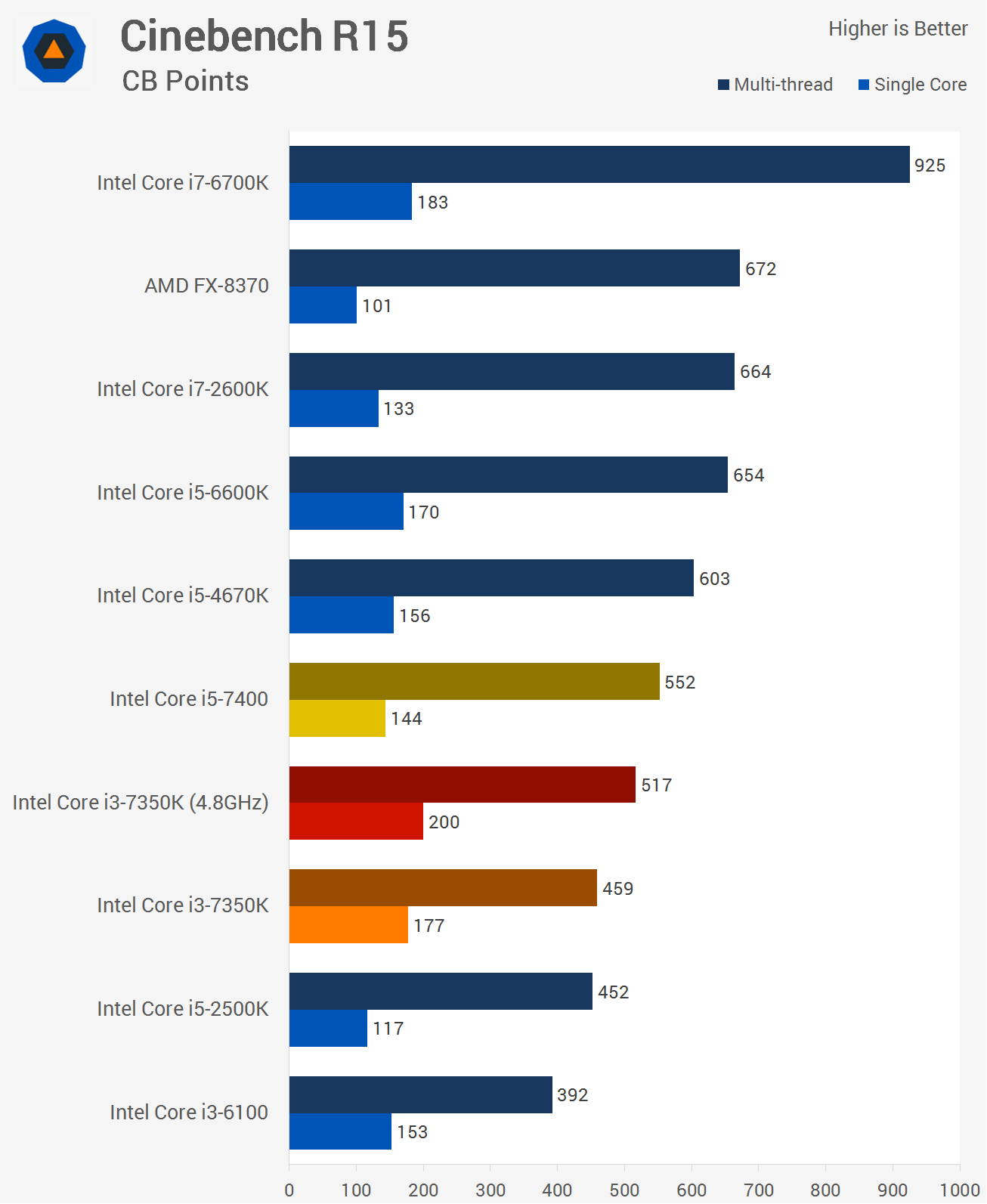
First up let's check out the single and multi-threaded performance using Cinebench R15. Here we see despite a massive clock speed advantage the 7350K is still quite a bit slower than the 7400 when comparing multi-threaded performance. That said, when overclocked the 7350K looks to be almost 40% faster for single threaded tasks.
